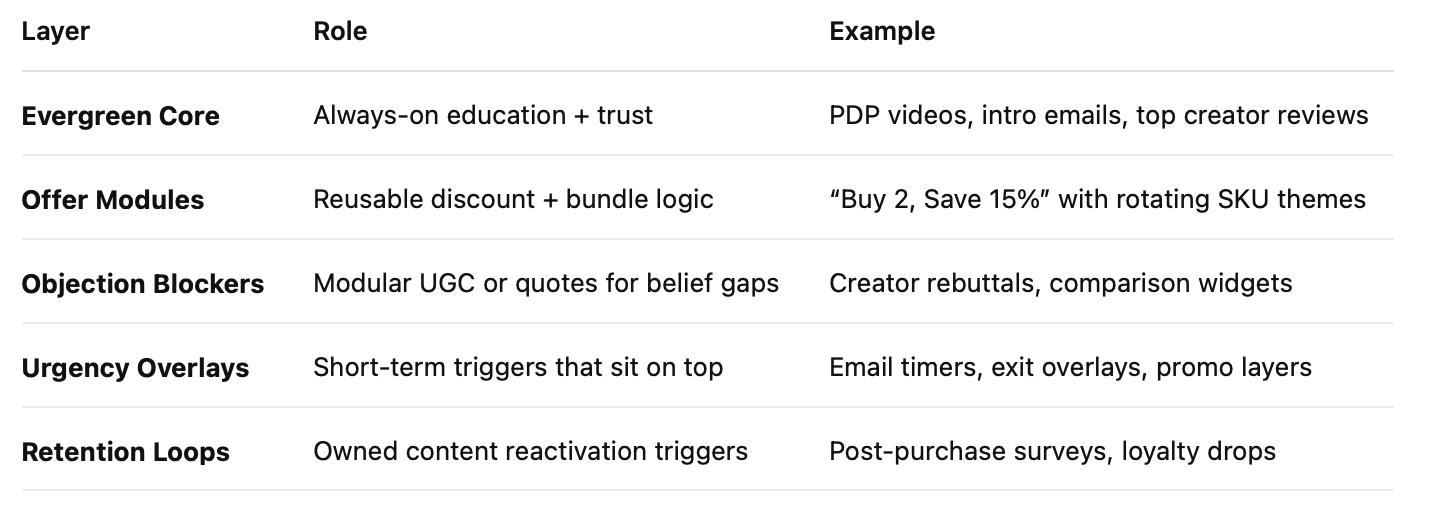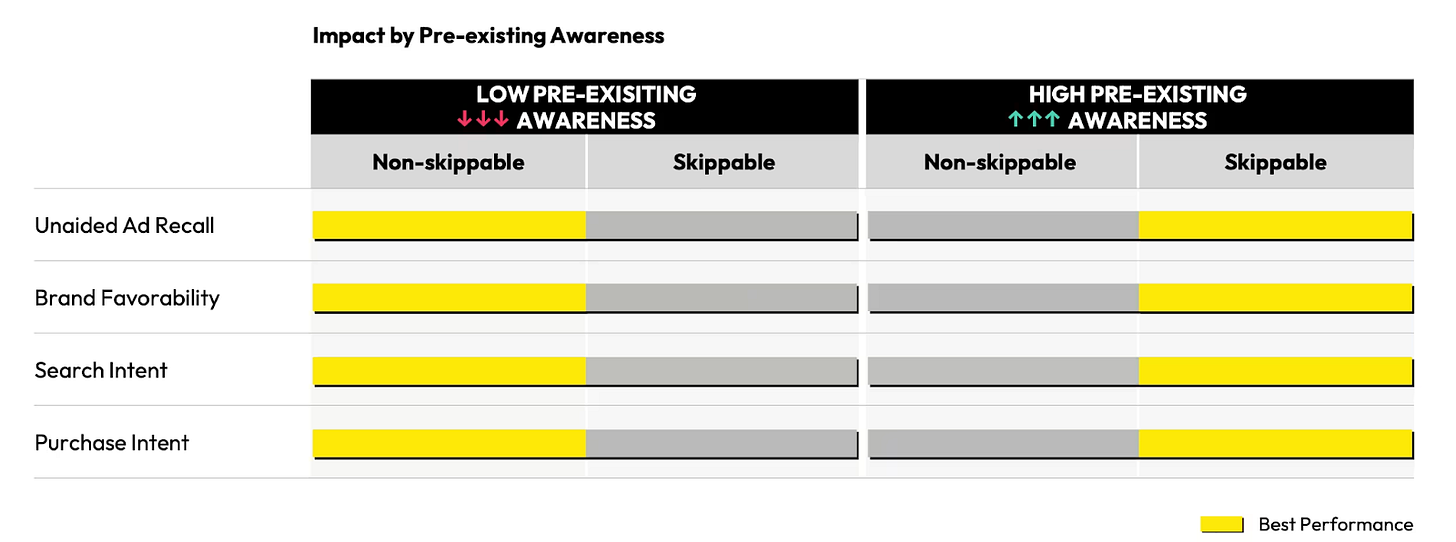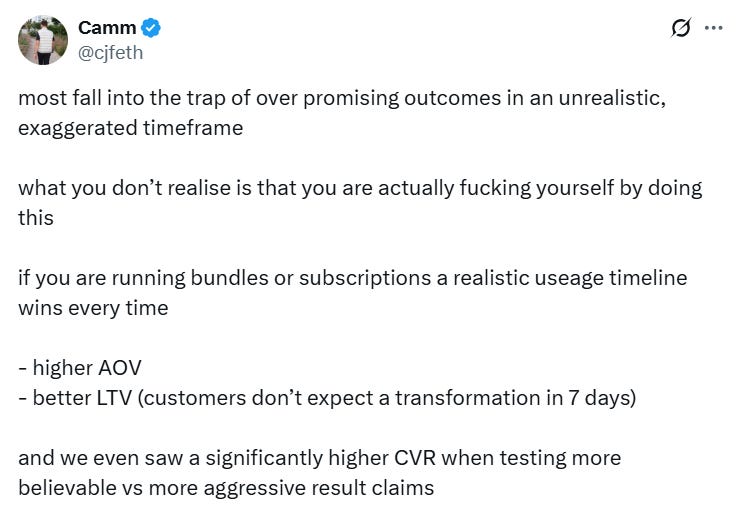The Anti-Campaign Growth System
🔁 Why the smartest DTC brands no longer think in “launches” and what they build instead, Snapchat’s Skippable vs. Non-Skippable Ads, and more!
Howdy Readers 🥰
In this newsletter, you’ll find:
🔁 The Anti-Campaign Growth System: Why the smartest DTC brands no longer think in “launches” and what they build instead.
🎯 Snapchat’s Skippable vs. Non-Skippable Ads: What Actually Works Best
🚀Tweet of the Day
If you’re new to Buyology then a hearty welcome to you, You’ve reached the right place alongside 50k+ amazing people, Before you forget, if someone forwarded this newsletter to you, don't forget to subscribe to our newsletter so you never miss out!
Together with dofollow.com
AI can’t cite what it can’t find.
AI is reshaping how your buyers discover products.
But here’s the catch: it only cites what it sees.
If your content isn’t earning backlinks from respected sources, you won’t rank, and you won’t get mentioned by AI.
That’s where dofollow.com comes in. They help SaaS teams earn editorial links from sites your buyers (and Google) actually trust.
Because if you’re not showing up there, your competitors are.
Here's what real SaaS brands achieved with them:
NectarHR went from 0 to 50+ demos a month and saw 3900% increase in traffic
Heymarket’s top keyword jumped 65+ positions, driving a 6× traffic lift.
Check out how top brands earn links AI actually cites.
🔁 The Anti-Campaign Growth System: Why the smartest DTC brands no longer think in “launches” and what they build instead.
Campaigns get attention. Systems build momentum.
Yet most brands are still sprinting, launching monthly offers, chasing creative fatigue, burning team energy in start-stop cycles. The result? Flatlining LTV, broken funnels, and burned-out teams.
The top 1% of brands in 2025 don’t win with bigger launches. They win with modular, compounding growth systems, where content, offers, pages, and touchpoints are designed to stack, not reset.
Here’s how they do it.
⚙️ The Shift: From Sprints to Systems
“We don’t launch campaigns. We deploy assets into pipelines.”
Campaigns expire. Assets evolve. Instead of asking “What’s our next promo?” these teams ask:
Which message → which stage → which asset → which format → which channel?
How can we plug this creative into a 12-week lifecycle, not a 2-day spike?
They treat marketing like infrastructure. Think CRM meets performance meets product ops.
The Layered Asset System
Here’s what replaces “the campaign calendar” in modern teams:
These aren’t campaigns. They’re components, deployed across ads, pages, email, SMS, and customer service.
Execution: How Teams Build the System
Systemized brands don’t “launch.” They plug in assets weekly and update based on performance flow.
Use heatmaps, funnel leaks, and quiz exits to ID weak message stages
Map belief gaps to matching content or testimonials (not just visuals)
Maintain a living creative library of proven assets by funnel stage
Use CMS tools or landing builders with modular blocks (e.g., Replo, Shogun)
Implement feedback tagging across support tickets to inform future content
And when they need rapid content for a specific stage (say, a fresh testimonial for BOF or region-specific trust layer)…
One of the fastest plug-and-play systems is using niche-fit creator content via Modash, it gives teams instant access to the right voices without slowing the machine. You can start a 14 day free trial with Modash to see what it can do!
Campaigns require momentum. Systems generate it.
When your growth engine is modular, tested, and scalable, you don’t need to “launch” every month to grow. You just feed the machine. Build assets, not ads. Stack messages, not media. Run systems, not sprints.
🎯 Snapchat’s Skippable vs. Non-Skippable Ads: What Actually Works Best
Snapchat just released new data comparing skippable and non-skippable ad formats, based on a study of 4,800 users. Both formats drive strong recall, but user sentiment, format pairing, and message clarity all affect overall performance. The takeaway: no single format wins, campaign structure matters more than length alone.
The Breakdown:
1. The first 2 seconds are everything - Snap found that most recall happens within the first 2 seconds, whether or not an ad is skippable. Non-skippable ads delivered slightly better overall recall, but both formats followed a similar attention curve.
2. Mixed formats drive deeper engagement - A combo of skippable + non-skippable ads lifted brand preference by 6 points and brand interest by 5 points, more than double what single-format campaigns achieved. Users remember more and respond better when they’re given some variety.
3. Skippability builds favorability - 81% of viewers globally preferred having the option to skip, with countries like the USA and the UK showing 86% agreement. Even if recall dips slightly, the added control builds goodwill, especially in high-frequency placements.
Snapchat’s five-point playbook for brand lift includes format variety, upper funnel bidding, and simplified creative. Non-skippable may win in pure recall, but without audience match and clear CTAs, even strong ads can fall flat. Every part of the funnel needs to align.
🗝️ Tweet of the Day
Advertise with Us
Wanna put out your message in front of over 50,000 best marketers and decision makers?
Checkout our Partner Kit here🤝
At Buyology, we care about our readers and want to provide the best possible experience. That's why we always look for ways to improve our content and connect with our audience. It would be amazing if you could hit us up with feedback about our content or absolutely anything, we are always up for a chat 🥰
Thanks for your support, We'll be back with more such content 🥳




